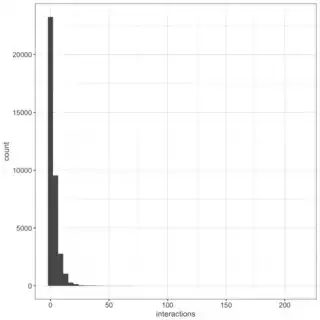One approach to modeling count data with many zeroes, if I understand correctly, is to use a zero-inflated Poisson distribution.
I read about an alternate (to using the zero-inflated Poisson distribution) approach that I am looking for feedback on and insight into, in part because I cannot remember where I read it.
I am considering this alternate because - at least in the software I am using (lme4::lmer() in R) - it is significantly harder to carry out the zero-inflated Poisson distribution approach than the proposed alternate approach.
The approach, in cases where there are many zeroes, is to run two separate models:
- one for whether the outcome is
0or1(so a binomial distribution) - one for - if the outcome is greater than
0- what the number is (so a Poisson distribution)
I think for both, the predictor variables are exponentiated / the log of the outcome is used (if I understand how log link functions work).
Does this two-step approach sound like a reasonable approach to modeling such data?
In the case that data with many zeroes can be identified through a histogram, here is one of the response variables in my specific use case.
